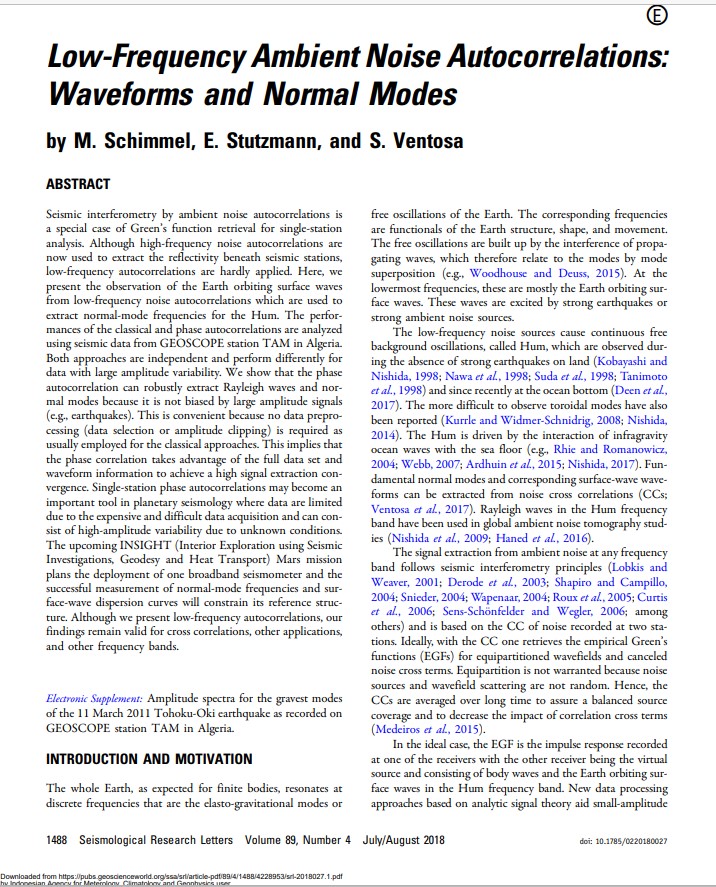Seismic interferometry by ambient noise autocorrelations is a special case of Green’s function retrieval for single-station analysis. Although high-frequency noise autocorrelations are now used to extract the reflectivity beneath seismic stations, low-frequency autocorrelations are hardly applied. Here, we present the observation of the Earth orbiting surface waves from low-frequency noise autocorrelations which are used to extract normal-mode frequencies for the Hum. The performances of the classical and phase autocorrelations are analyzed using seismic data from GEOSCOPE station TAM in Algeria. Both approaches are independent and perform differently for data with large amplitude variability. We show that the phase autocorrelation can robustly extract Rayleigh waves and normal modes because it is not biased by large amplitude signals (e.g., earthquakes). This is convenient because no data preprocessing (data selection or amplitude clipping) is required as usually employed for the classical approaches. This implies that the phase correlation takes advantage of the full data set and waveform information to achieve a high signal extraction convergence. Single-station phase autocorrelations may become an important tool in planetary seismology where data are limited due to the expensive and difficult data acquisition and can consist of high-amplitude variability due to unknown conditions. The upcoming INSIGHT (Interior Exploration using Seismic Investigations, Geodesy and Heat Transport) Mars mission plans the deployment of one broadband seismometer and the successful measurement of normal-mode frequencies and surface-wave dispersion curves will constrain its reference structure. Although we present low-frequency autocorrelations, our findings remain valid for cross correlations, other applications, and other frequency bands.
-
Low-Frequency Ambient Noise Autocorrelations: Waveforms and Normal Modes
M. Schimmel, E. Stutzmann, and S. Ventosa
Penerbit :
Seismological Research Letters
Tahun :
2018
epaper
Geofisika
-
No Scan-
-
No Klasifikasidoi: 10.1785/0220180027
-
ISBN-
-
ISSN-
-
No Registrasi-
-
Lokasi TerbitUSA
-
Jumlah Hal9
-
Label-
-
Versi DigitalTIDAK
-
Versi FisikTIDAK
-
Lokasi Rak Buku Fisik//
-
Jumlah Exemplar Fisik Tersedia-




